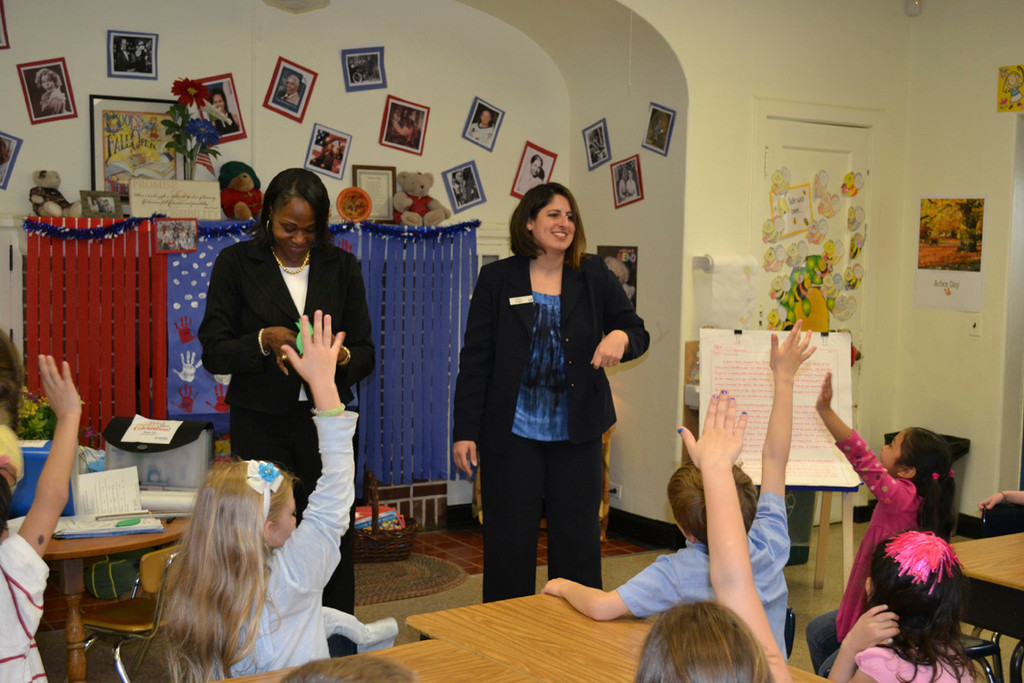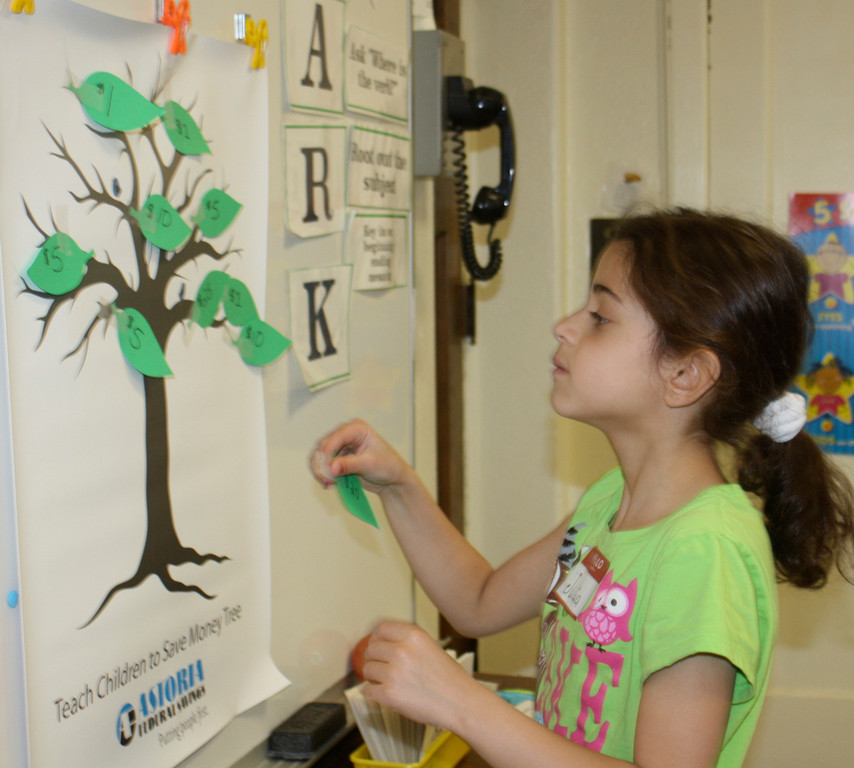Does money really grow on trees?
Lynbrook second-graders get a lesson on saving money
More than 200 Lynbrook second graders participated in a fun and interactive lesson on saving money, presented by Astoria Federal Savings. Local branch manager Denise Rogers and her Astoria Federal team visited Waverly Park, West End and Marion Street schools, inviting students to help create a healthy “money tree” by suggesting ways to save and spend wisely.
Rogers introduced terms such as income, interest, savings, earnings and investment to the students in easy-to-understand terms. “Why use a bank?” she asked. “To save for something you really want,” answered one child.
“How do you get money?” she asked. “From my parents, as a gift, from a lemonade stand,” they offered.
“How can you keep your money safe?” she asked. The students suggested putting it in a piggy bank, a lunch box, a dresser drawer or a shoe.
“Those are all good places to keep your money,” she concluded. “But a bank is an even safer place to save your money and make it grow.”
“What does a tree need to grow?” she asked. “Water, sun, soil, sunlight,” answered the children, one by one.
One way you can tell when a tree is healthy, she noted, is by observing whether it has a lot of leaves. Then she invited the children to help her add leaves to her Astoria Federal Money Tree. Each leaf represented a sum of money the children had earned. As they added leaves to the tree, the children were able to see how quickly their savings could accumulate, making it possible for them to eventually save enough to pay for things like a bicycle, a flat screen TV or even a college education.
The program, which takes place throughout Astoria Federal’s neighborhood branch network, launched in April during National Teach Children to Save Month. It uses a curriculum developed by the American Bankers Association (ABA) Education Foundation and complements Astoria Federal’s own Education First initiative, which encourages lifelong learning in the communities it serves. Last year, nearly 2,000 children participated in the financial literacy lessons. Now in its second year, the program has reached even more students and encourages saving habits that will last a lifetime.









